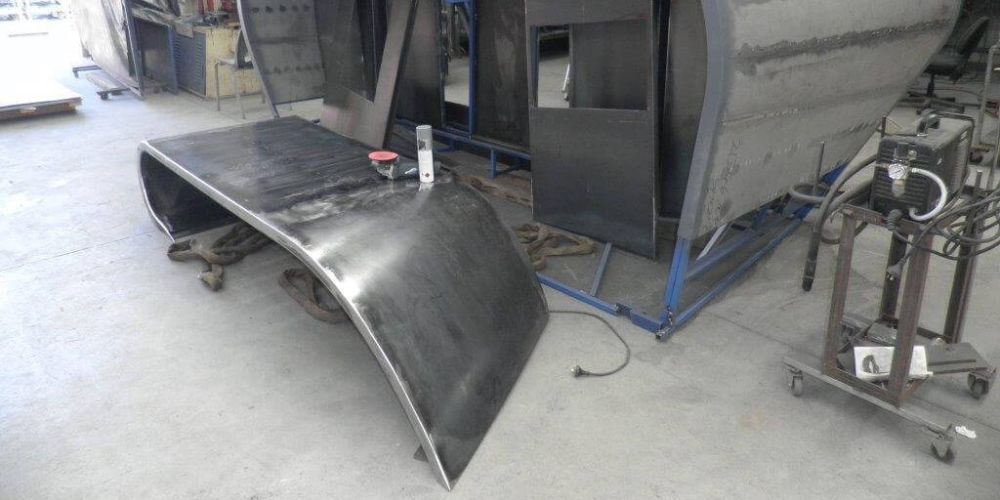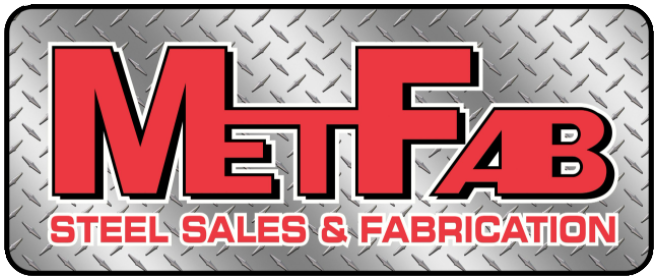Carbon Steel vs Stainless Steel: Which is Better for Your Project?
When you’re planning a project that involves metalwork, choosing the right material is one of the most crucial decisions you’ll make. The debate between carbon steel and stainless steel often leaves many scratching their heads, trying to figure out which is the better option.
I’ve been in the metal fabrication field for years here in Melbourne, and I’ve faced this question countless times. Knowing the technical specs is not enough—experience plays a huge role in making the right choice.
In this blog, I’m excited to share what I’ve learned from my hands-on experience with both materials so you can make an informed decision for your project.

Understanding the Basics: Carbon Steel vs. Stainless Steel
Before we discuss their difference, let’s break down what makes examining, which distinguishes carbon steel from stainless steel basics, will give you a solid to help you decide what is right for your project.
Carbon Steel
Carbon steel is like the workhorse of metals—it’s tough, durable, and doesn’t shy away from heavy-duty tasks. Its high carbon content gives it incredible strength, which is why you’ll find it used in everything from construction beams to automotive parts. I remember the first time I worked with carbon steel; I was struck by how solid and reliable it felt in my hands. But with that strength comes a vulnerability—carbon steel is prone to rust. If your project is going to be exposed to moisture or the elements, you’ll need to take extra steps to protect it, like applying coatings or paint.
Stainless Steel
Stainless steel, on the other hand, is the material of choice when you need something that’s not only strong but also resistant to corrosion. What sets stainless steel apart is its chromium content, which forms a protective layer that prevents rust. This makes it ideal for environments where moisture is a constant threat—think kitchens, bathrooms, and outdoor installations. The first time I used stainless steel was for a set of custom kitchen countertops, and I was immediately impressed by its sleek, polished appearance. It’s a bit more challenging to work with compared to carbon steel, but the results are well worth the effort, especially if you want something that looks great and lasts a long time.
Composition
Carbon Steel
Carbon steel is primarily composed of iron and carbon, with the carbon content typically ranging from 0.05% to 2.0%. The exact carbon content determines the steel’s hardness and strength—higher carbon content means a harder, stronger steel, but also one that’s more brittle.
Stainless Steel
Stainless steel is an alloy of iron with a minimum of 10.5% chromium cy mass, which gives it its corrosion-resistant properties. It may also contain other elements like nickel, molybdenum, and carbon, which enhance its durability, strength, and resistance to extreme temperatures.
Strength and Durability
Carbon Steel
When you’re working on a project that demands strength, carbon steel is often the best choice. I’ve had numerous projects where the material needed to withstand significant force and carbon steel always delivered. One such project was a large public sculpture that had to endure not just the elements but also the wear and tear of people interacting with it. The sculpture needed to be sturdy enough to last for decades, and carbon steel was the perfect material for the job. Its high tensile strength meant it could handle the stress without bending or breaking, ensuring that the sculpture remained a landmark in the park.
Stainless Steel
However, there are times when corrosion resistance is just as important as strength. The chromium in stainless steel forms a thin layer of oxide on the surface, which protects the metal from rust and corrosion. This makes stainless steel ideal for environments where moisture and exposure to elements are a concern. This is where stainless steel truly shines. I once worked on a waterfront property that required a series of handrails. Given the constant exposure to saltwater, I knew that carbon steel wouldn’t last long without showing signs of rust. Stainless steel was the obvious choice, offering both durability and corrosion resistance. Even years later, those handrails still look as good as new, proving that stainless steel was the right material for the job.
Corrosion Resistance
Carbon Steel
Rust is the enemy of any metalworker, and it’s something I’ve had to deal with more times than I can count. Early in my career, I made the mistake of underestimating the impact of rust on a project. I was working on an outdoor sign made from carbon steel. I thought I had taken enough precautions by applying a protective coating, but within a year, rust had started to creep in. It was a tough lesson to learn, but it taught me the importance of choosing the right material for the environment. Since then, I’ve become much more cautious and often recommend stainless steel for projects where rust could be a problem.
Stainless Steel
Stainless steel, on the other hand, has been a reliable choice whenever corrosion is a concern. I’ve used it for everything from outdoor sculptures to kitchen fittings, and it has consistently stood up to the test. The chromium content in stainless steel creates a protective layer that makes it resistant to rust, even in harsh environments. This makes it ideal for projects that need to stand the test of time without constant maintenance. I’ve seen firsthand how stainless steel can maintain its appearance and integrity, even after years of exposure to the elements.
Cost Considerations
Carbons Steel
Let’s talk about the elephant in the room—cost. When you’re working on a budget, carbon steel often seems like the more attractive option. It’s affordable, and when used in the right conditions, it can perform just as well as stainless steel. I’ve worked on many projects where the budget was tight, and carbon steel allowed us to get the job done without breaking the bank. For example, in large-scale industrial builds where the sheer volume of material needed makes stainless steel impractical, carbon steel can save a significant amount of money upfront.
Stainless Steel
However, I’ve also learned that cost isn’t just about the initial outlay. You have to think about the long-term value. Stainless steel might be more expensive upfront, but its durability and resistance to corrosion can save you money in the long run. I remember a project where the client chose carbon steel to save on costs. Unfortunately, the material didn’t hold up as well as we’d hoped, and they ended up spending more on repairs and replacements down the line. Since then, I have always advised clients to consider the long-term implications of their material choices. Sometimes, spending a bit more on stainless steel can pay off in terms of reduced maintenance and longer-lasting results.
Aesthetic Appeal
Carbon Steel
While strength and durability are crucial, aesthetics often play a significant role in material selection, especially for projects where appearance matters just as much as functionality. Carbon steel has a certain rugged charm that can be perfect for industrial or rustic designs. I’ve used it in a variety of settings, from modern loft spaces to industrial-style bars, where its raw, unfinished look adds character and authenticity. The great thing about carbon steel is that it can be finished in a number of ways, whether you want a smooth, polished surface or something more textured and rough.
Stainless Steel
Stainless steel, however, is in a league of its own when it comes to aesthetics. Its sleek, shiny appearance makes it a favourite for high-end designs. I’ve worked on projects where stainless steel was used for kitchen countertops, stair railings, and even custom furniture, and it always adds a touch of elegance and modernity. What’s more, stainless steel maintains its appearance over time with minimal maintenance, making it ideal for projects where longevity is key. Whether you’re going for a contemporary look or something more classic, stainless steel can elevate the design of your project.

Best Applications for Each Steel Type
So, when should you choose carbon steel, and when should you go with stainless steel? Here’s what my experience has taught me:
- Carbon Steel is your go-to material when strength and durability are the top priorities, and you’re working in an environment where you can protect the material from rust. It’s ideal for industrial machinery, tools, structural components, and any project where toughness is more important than appearance or corrosion resistance.
- Stainless Steel: Opt for stainless steel when corrosion resistance and aesthetics are at the top of your list. It’s the perfect choice for kitchens, bathrooms, architectural features, and any outdoor project where the material will be exposed to moisture. Stainless steel is also a great option when you need something that looks good and lasts for years with minimal upkeep.
Best Applications for Each Steel Type
When selecting between carbon steel and stainless steel, consider the following:
- Project Environment: Will your project be exposed to moisture, salt, or chemicals? If so, stainless steel’s corrosion resistance makes it the better choice.
- Budget: If cost is a primary concern and the project environment doesn’t pose a risk of rust, carbon steel can offer significant savings.
- Aesthetic Requirements: For projects where appearance is key, stainless steel’s polished look and low-maintenance durability are hard to beat.
- Strength Needs: For heavy-duty applications where strength is paramount and rust isn’t an issue, carbon steel’s toughness is unmatched.
FREQUENTLY ASKED QUESTIONS
Conclusion
Hiring a professional metal fabricator is a smart investment for any project requiring quality metalwork. Whether you're working on a small repair, custom furniture, or large structural elements, a skilled fabricator ensures precision, durability, and aesthetic appeal.
While it might seem tempting to handle metalwork independently, the benefits of professional expertise far outweigh the costs. For the best results, take the time to consult with a reputable metal fabricator who can bring your vision to life efficiently and safely. Make the smart choice and invest in professional metal fabrication for your next project.

